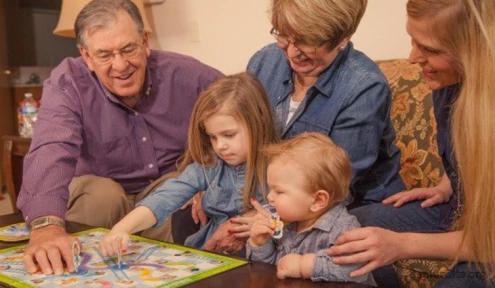Hollywood’s focus on younger demographics leaves many older viewers searching for meaningful content. The film industry primarily targets audiences under 40, yet classic movies for seniors offer substantial value beyond entertainment.
Legendary performers like Robert Duvall, Jack Nicholson, and Meryl Streep created enduring characters that resonate deeply with mature audiences. Their nuanced portrayals explore complex themes of love, loss, and personal transformation across decades of cinematic history.
This collection presents 17 timeless films spanning beloved romantic dramas to powerful stories of friendship. Each selection demonstrates cinema’s unique ability to capture life’s pivotal moments while sparking meaningful dialogue between generations. These classics continue drawing viewers through their sophisticated storytelling and authentic emotional depth.
Gone with the Wind (1939): The Epic That Changed Cinema
Gone with the Wind redefined Hollywood’s approach to filmmaking after its December 1939 release. The United States National Film Registry selected it among twenty-five inaugural films for preservation.
The film’s box office dominance remains unmatched, holding the record as history’s highest-grossing film when adjusted for inflation. Its critical acclaim proved equally impressive – securing ten Academy Awards from thirteen nominations at the 12th Academy Awards, including Best Picture and Best Director. Television broadcasts later demonstrated its enduring appeal, with 47.5% of American households tuning in, setting a single-network ratings record.
Producer David O. Selznick’s exhaustive search for Scarlett O’Hara involved interviewing 1,400 women. Vivien Leigh ultimately claimed the role after Selznick discovered her in “Fire Over England”. The film’s ambitious production included the spectacular burning of Atlanta sequence, where Fleming orchestrated elaborate scenes featuring collapsing structures amid real flames.
Walter Plunkett’s historically accurate costumes and William Cameron Menzies’ detailed production design created an immersive period atmosphere. Max Steiner’s score, particularly “Tara’s Theme,” established itself among cinema’s most recognizable musical compositions.
HBO Max addresses the film’s complicated legacy through film scholar Jacqueline Stewart’s introduction. She explains how it “depicts the Antebellum South as a world of grace and beauty, without acknowledging the brutalities of the system of chattel slavery”. Despite these historical misrepresentations, the film’s technical achievements in lighting, camera work, and special effects continue drawing audiences.
[Casablanca (1942): A Timeless Romance]
Michael Curtiz’s Casablanca captured the essence of love, sacrifice, and moral choices against World War II’s backdrop. The 1942 romantic drama continues drawing audiences through its sophisticated exploration of human relationships.
Humphrey Bogart and Ingrid Bergman created one of cinema’s most magnetic partnerships, despite barely speaking between takes. Bergman’s natural warmth as Ilsa Lund complemented Bogart’s cynical portrayal of Rick Blaine. Their initial script reservations dissolved as both performances launched them to international stardom.
Real-world experiences enriched the film’s authenticity – 75 cast members were immigrants. S.Z. Sakall and Helmut Dantine brought genuine emotional depth, having fled Nazi persecution themselves. During the powerful “La Marseillaise” scene, cast members’ tears flowed from personal memories of escaping fascism.
The Epstein brothers and Howard Koch crafted dialog that remains sharp and memorable. Their sophisticated treatment of sacrifice, honor, and duty resonates deeply with viewers. Rather than presenting simple romance, the film explores love’s power to drive personal growth and moral awakening. This depth, combined with masterful suspense and historical significance, explains why Casablanca consistently ranks among cinema’s greatest achievements.
It’s a Wonderful Life (1946): Holiday Heart
Frank Capra’s It’s a Wonderful Life flopped at its 1946 box office release. The film later transformed into a beloved holiday classic, celebrating human resilience and community spirit.
James Stewart returned from World War II service as a flight leader to deliver his career-defining George Bailey portrayal. The pivotal prayer scene at Martini’s bar captured unscripted tears flowing naturally. Stewart’s raw emotion stemmed from his wartime experiences, producing one of cinema’s finest acting moments.
George Bailey’s journey through Bedford Falls reveals essential truths about human connection. His selfless actions shield the town from becoming the corrupted Pottersville. Though dreaming of world travel, Bailey discovers his family’s worth exceeds material success. The narrative demonstrates how receiving help proves as vital as giving it. Through Clarence’s divine intervention, Bailey sees how his perceived failures touched countless lives. The story culminates by showing true wealth exists in friendship, not finances.
The film entered public domain in the early 1970s, evolving into a Christmas Eve staple. NBC’s 1994 exclusive TV rights acquisition cemented its annual holiday presence. Letters pour in from viewers worldwide – Great Britain to the Middle East. The universal themes of hope, redemption, and community support resonate across generations, making it an enduring holiday gift.
Singin’ in the Rain (1952): Musical Magic
Singin’ in the Rain started as a modest box office success in 1952. Time elevated this masterpiece to cinema’s highest ranks, with the American Film Institute naming it the greatest movie musical ever made.
Gene Kelly created cinema’s most memorable musical moment during the iconic rain sequence. Despite battling a 103-degree fever, Kelly danced through torrential downpours with fluid movements perfectly matching the music. Between takes, he lay in sunlight attempting to recover.
Harold Rosson’s groundbreaking cinematography pushed technical boundaries. Continuous, uninterrupted takes captured dance sequences in their natural flow. Camera operators tackled complex challenges, particularly back-lighting rain for optimal visibility. High lighting demands of Technicolor produced a vibrant visual palette enhancing the film’s magical atmosphere.
Donald O’Connor’s “Make ‘Em Laugh” showcases remarkable physical comedy. Nacio Herb Brown’s “Broadway Ballet” delivers a 13-minute spectacle blending ballet, tap dancing, and salsa elements. The “Good Morning” number highlights Gene Kelly, Donald O’Connor, and Debbie Reynolds’ individual strengths.
Set against Hollywood’s transition from silent films to “talkies”, the story finds humor in characters struggling with new sound equipment. Musical numbers integrate seamlessly into the narrative, underscoring sound’s revolutionary impact on cinema.
Roman Holiday (1953): Royal Romance
Roman Holiday secured three Academy Awards while introducing Audrey Hepburn to worldwide audiences. The 1953 film tells an enchanting story of freedom, romance, and self-discovery.
Hepburn’s portrayal of Princess Ann earned her an Academy Award for Best Actress, a BAFTA, and a Golden Globe. The New York Times praised her performance as “alternatively regal and childlike,” noting how her elfin beauty departed from Hollywood’s typical glamor standards.
Rome’s post-war landscape provided more than mere backdrop. The Spanish Steps, Mouth of Truth, and other landmarks became characters in their own right. Edith Head’s Oscar-winning costume designs ranged from royal elegance to casual sophistication, created through close collaboration with Hepburn.
Gregory Peck’s Joe Bradley shares authentic chemistry with Hepburn’s Princess Ann. Their adventures through Rome – riding Vespas and dancing by the Tiber River – create moments of genuine connection. The final press conference scene communicates volumes through unspoken glances.
Dalton Trumbo’s screenplay balances light humor with emotional weight. Rather than deliver fairy-tale endings, the story chooses duty and personal sacrifice over romantic fulfillment. This mature approach to love, captured in stunning black-and-white cinematography, maintains a 95% Rotten Tomatoes rating.
The Bridge on the River Kwai (1957): War Epic
David Lean’s The Bridge on the River Kwai secured seven Academy Awards, exploring war’s psychological devastation through themes of honor and duty.
The Burma-Siam railway’s construction claimed 13,000 prisoners of war and up to 100,000 civilian laborers. Daily death tolls reached 75 men under Japanese supervision, far exceeding the film’s sanitized portrayal.
Alec Guinness earned an Oscar portraying Lieutenant Colonel Nicholson. His character’s descent from principled British officer to obsessed bridge builder reveals war’s ability to corrupt even the most steadfast minds. Guinness captures this transformation through subtle shifts in demeanor and increasingly manic dedication to the project.
Colonel Saito’s predicament mirrors Nicholson’s moral crisis. The Japanese commander faces ritual suicide if the bridge remains unfinished. Their parallel struggles highlight how military honor can blur into dangerous obsession.
Nicholson’s final realization – “What have I done?” – precedes Major Clipton’s haunting observation: “Madness! Madness!”. The bridge, meant to showcase British engineering prowess, becomes their monument to wartime delusion.
The real Lieutenant Colonel Philip Toosey actively promoted sabotage, contrasting sharply with Nicholson’s fictional collaboration. This gap between historical truth and dramatic license adds deeper complexity to the film’s examination of warfare’s moral ambiguities.
Some Like It Hot (1959): Comedy Gold
Some Like It Hot topped BBC Culture’s 100 greatest comedy films poll. Billy Wilder’s 1959 film tackles gender roles and identity while blending crime caper elements with social commentary.
Marilyn Monroe’s Sugar Kane portrayal required up to 47 takes for certain lines. Her performance transcended typical “dumb blonde” stereotypes, bringing depth and intelligence to the character. The “I Wanna Be Loved By You” number demonstrated Monroe’s skill at balancing vulnerability with sensuality.
Tony Curtis and Jack Lemmon play Joe and Jerry, men who disguise themselves as women to escape mobsters. Their story challenged the Hays Code’s restrictions on gender fluidity. The film treated cross-dressing with unusual respect for its era. The female band members’ acceptance of “Josephine” and “Daphne” showed progressive attitudes toward gender expression.
The film helped dismantle the restrictive Hays Code. Its closing line – “Well, nobody’s perfect” – ranks 78th among Hollywood’s favorite movie quotes. Wilder and I.A.L. Diamond’s screenplay balanced physical comedy with sharp dialog. The story’s exploration of identity earned six Academy Award nominations, proving comedy’s power to challenge social norms while entertaining audiences.
The Sound of Music (1965): Musical Masterpiece
Robert Wise’s The Sound of Music premiered nationwide April 1, 1965. The film blends musical performances with dramatic historical elements that continue resonating through generations.
Julie Andrews secured a Golden Globe portraying Maria, following her Oscar-nominated Mary Poppins role. Europe’s seventh-highest rainfall complicated filming in the Austrian Alps. Andrews rode ox carts through mud and wind to reach remote locations. The film’s success proved unprecedented – becoming the first to surpass $100 million in box office earnings.
Historical reality differs from the movie’s dramatic portrayal. The actual von Trapp family escaped by walking through their villa’s back gate to nearby train tracks, then boarding transport to Italy. Georg von Trapp’s personality contrasted sharply with his screen version – described as “a very charming man, generous, open, and not the martinet” shown in the film. The family’s musical abilities predated Maria, already knowing “at least a hundred songs”.
The production recorded its soundtrack before filming began, with Andrews miming to pre-recorded vocals. Bill Lee provided Christopher Plummer’s singing voice. Though additional voices enhanced the children’s songs, Charmian Carr insisted all child actors performed their own vocals. The film ranks sixth among highest-grossing films adjusted for inflation. The Library of Congress confirmed its cultural significance through National Film Registry preservation in 2001.
The Graduate (1967): Generation Gap Tale
Mike Nichols’ The Graduate grossed almost $105 million after its December 1967 release, ranking third among highest-grossing films of its era. The film redefined Hollywood’s understanding of audience demographics.
Nichols’ innovative direction earned him an Academy Award. His masterful techniques captured Benjamin’s lost summer through compelling montages, while the final sequence became an American cinema icon. The film’s crisp screenplay exposed the dehumanizing atmosphere of affluent Los Angeles.
Simon & Garfunkel’s soundtrack revolutionized film music. “The Sound of Silence” played three times, later entering the Grammy Hall of Fame. “Mrs. Robinson” evolved from an unfinished song titled “Mrs. Roosevelt”. The Columbia Masterworks soundtrack topped charts, introducing Simon & Garfunkel to mainstream audiences.
Studios previously believed “everything should appeal to everyone.” The film’s two-year theater run revealed “almost half their paying audience was under 24” [111, 112]. Hollywood shifted focus from James Bond and John Wayne toward complex characters like Ratso Rizzo and Al Pacino.
The Graduate captured boomer generation alienation without explicitly embracing counterculture. Its themes of postgraduate uncertainty resonated with young viewers. The struggle between societal expectations and personal fulfillment continues drawing modern audiences.
The Godfather (1972): Crime Saga Supreme
Francis Ford Coppola’s adaptation of Mario Puzo’s novel redefined American cinema in 1972. The crime saga examines power, family, and the American dream through the Corleone family’s rise.
Studios labeled Marlon Brando a “washed-up, temperamental has-been”. His screen test silenced doubters as he transformed into Don Vito Corleone using subtle mannerisms and innovative makeup. Brando crafted the character’s distinctive voice without recording during the test, creating one of cinema’s defining performances.
The Godfather shifted Hollywood’s portrayal of Italian-Americans beyond stereotypes. The narrative weaves succession, power, and family loyalty into a distinctly American story. Yet cultural impact proved complex – challenging existing stereotypes while cementing new associations between Italian-Americans and organized crime.
Post-Hays Code restrictions, the film revolutionized crime drama storytelling. Characters emerge as complex individuals driven by family values and loyalty, even during morally questionable acts. This sophisticated approach influenced later works, including The Sopranos.
The film transcends typical gangster narratives by focusing on filial succession and family bonds. This new crime mythology resonated globally, demonstrating cinema’s power to explore moral complexity while achieving artistic excellence.
One Flew Over the Cuckoo’s Nest (1975)
Miloš Forman’s mental health treatment drama secured all five major Oscar categories at the 1976 Academy Awards, a feat unmatched in 41 years. The 1963-set narrative exposes life inside a psychiatric institution.
Jack Nicholson crafted R.P. McMurphy’s character through psychiatric ward visits and patient interactions. His secret character motivation – McMurphy’s desire to seduce Nurse Ratched – shaped his tragic downfall. Louise Fletcher’s Nurse Ratched creates electric tension against Nicholson’s rebellious presence.
Oregon State Hospital provided authentic backdrop, with its superintendent appearing as consulting psychiatrist. Real mental patients joined the supporting cast. The production challenged existing mental healthcare perceptions through raw examinations of power, autonomy, and consent.
Bowed saws and stroked wineglasses create the film’s unsettling atmosphere. The fishing expedition scene stands among viewer favorites. Unscripted moments emerged as actors immersed themselves in hospital culture.
Five Academy Awards – Picture, Director, Actor, Actress, and Adapted Screenplay – mark the film’s technical excellence. Chief Bromden shifts from novel narrator to supporting character, embodying institutional resistance. The violent ending echoes the source material, balancing death with potential liberation.
On Golden Pond (1981): Family Drama
Ernest Thompson’s award-winning play adaptation On Golden Pond created groundbreaking roles for older actors in 1981. The drama examines aging complexities and family reconciliation.
Katharine Hepburn and Henry Fonda made history as the first screen couple winning both Best Actor and Best Actress Oscars. Their performances capture authentic long-term marriage dynamics. Pet names, candid discussions, and natural affection reveal deep romantic bonds lasting into later years.
Norman’s character confronts mortality and dementia while struggling to repair his relationship with daughter Chelsea. Intergenerational connections emerge through Billy Jr.’s presence. The story presents an honest portrayal of identity challenges at age 80.
The film transformed Hollywood’s depiction of senior characters by exploring:
- Change versus relationship stagnation
- Fear battling against love
- Late-life relationship complexities
Hepburn’s Ethel stands as a powerful female figure, anchoring others’ emotional turmoil. The narrative handles dementia with notable grace. Henry and Jane Fonda’s real-life relationship mirrors their on-screen dynamic. Jane’s acceptance of her father’s Academy Award, due to his illness, created a poignant Hollywood moment.
Driving Miss Daisy (1989): Southern Tale
Bruce Beresford’s adaptation of Alfred Uhry’s Pulitzer Prize-winning play examines Southern race relations with remarkable nuance. Multiple Academy Awards confirmed the film’s critical success, drawing audiences worldwide.
Morgan Freeman returned to his Off-Broadway role as Hoke Colburn, the 60-year-old chauffeur. His quiet dignity persists against thinly veiled prejudices. Freeman later called this “one of the best jobs” in his movie career. Subtle expressions and measured responses create a character whose integrity transforms Miss Daisy’s perspective.
The story spans twenty-five years, revealing evolving bonds between a Jewish widow and her African-American driver. Miss Daisy confronts antisemitism after her synagogue bombing. Hoke’s experiences illuminate racial tensions pervading the mid-20th century South.
Miss Daisy progresses from stubborn 72-year-old widow to someone claiming Hoke as her “best friend”. Her initial resistance after crashing her car yields to gradual acceptance. Their friendship deepens as Miss Daisy teaches Hoke to read, building his confidence across their quarter-century connection.
Beresford captures authentic human moments, elevating potentially sentimental scenes into genuine emotional exchanges. Jessica Tandy’s portrayal of Miss Daisy secured an Academy Award, making her the oldest Best Actress recipient at that time.
Forrest Gump (1994): Historical Journey
Robert Zemeckis’ adaptation of Winston Groom’s novel earned $678.20 million worldwide. The story follows an Alabama man’s journey through defining moments in American history.
Tom Hanks secured his second consecutive Best Actor Oscar portraying Forrest Gump. His character development with Zemeckis moved beyond mere imitation to full embodiment. Their collaboration created a figure whose innocence and straightforward wisdom captivated global audiences.
Forrest’s life intersects with pivotal historical events from the 1950s through 1970s. The narrative weaves his presence into Watergate and John Lennon’s “Imagine” creation. The story examines civil rights struggles, Vietnam War impacts, counterculture emergence, and shifting American social values.
Ken Ralston’s Industrial Light & Magic team pioneered groundbreaking visual effects. CGI techniques placed Hanks seamlessly within historical footage, enabling interactions with historical figures. Blue screen technology and reference markers ensured precise alignment with archive materials. The Lincoln Memorial peace rally required complex effects to generate massive crowd scenes.
Six Academy Awards marked the film’s technical excellence. The period-specific soundtrack sold over 12 million copies. The Library of Congress recognized its significance through National Film Registry preservation in 2011.
The Shawshank Redemption (1994)
Frank Darabont’s Stephen King adaptation earned just $16.00 million during theatrical release. The prison drama later emerged as a defining piece of American cinema.
Tim Robbins plays Andy Dufresne, imprisoned for his wife’s murder. Morgan Freeman portrays Ellis ‘Red’ Redding, serving life for smuggling. Their performances create authentic male friendship without typical buddy film conventions. The relationship evolves naturally across two decades, revealing freedom through human connection [179, 180].
Andy’s persistent hope contrasts with Red’s early cynicism. Small defiances – broadcasting opera music, refusing money laundering schemes – demonstrate quiet resistance. The film presents hope as “a good thing, maybe the best of things”. Viewers worldwide report finding inspiration in this message, evidenced through countless letters to filmmakers.
Home video releases rescued the film from commercial failure. Seven Academy Award nominations followed. The United States Library of Congress recognized its significance through preservation in 2015. The narrative explores institutional power and personal liberty with remarkable sophistication. Regular television broadcasts maintain its influence decades after release.
[Titanic (1997): Epic Romance]
James Cameron’s romantic epic dominated box offices until his own Avatar surpassed its record in 2009. The narrative weaves historical tragedy with fictional love story.
Cameron populated his tale with authentic historical figures alongside invented protagonists Jack and Rose. Real passengers like Molly Brown appear with historically accurate heroic actions. Poignant true moments emerge throughout – notably Isidor and Ida Straus choosing to face death together in their flooding cabin.
Industrial Light & Magic pioneered revolutionary visual effects techniques. Digital water and crowd simulations merged seamlessly with live action and miniature models. Eighteen effects houses collaborated on the production, marking unprecedented technical cooperation. Three terabytes of data storage, remarkable for 1997, supported the massive undertaking. Cameron personally captured underwater footage at the actual wreck site.
Public fascination surged as the film coincided with advances in underwater exploration following the wreck’s 1985 discovery. Seven hundred survivors, mostly women and children, provided decades of firsthand accounts. Research shows tragic love stories prompt viewers to examine their own relationships. This blend of historical detail, technical innovation and emotional resonance earned Titanic eleven Academy Awards.
The Best Exotic Marigold Hotel (2011)
John Madden’s tale of British retirees in India generated $136.00 million worldwide against a $10.00 million budget. The unexpected 2012 success features Judi Dench, Maggie Smith, and Bill Nighy delivering nuanced portrayals beyond their script’s requirements. Their performances capture authentic struggles with life-changing decisions in later years.
Characters seek affordable healthcare and living arrangements amid contemporary retirement challenges. Maggie Smith’s character travels for a hip replacement unavailable through UK healthcare. The narrative examines financial pressures forcing seniors to consider radical life changes.
Jaipur’s historic Ravla Khempur hotel, built in 1620, provides the story’s backdrop. The filmmakers resist cultural stereotypes while depicting transformation through relocation. Yet colonial undertones emerge when British management “rescues” the struggling hotel.
Critics praised the film’s balance of humor and poignant moments, calling it “one great big hug of a film”. The actual filming location later adopted the movie’s name, becoming “The Best Exotic Marigold Hotel”. Most powerfully, the story proves life can be an adventure at any age, offering fresh perspectives on aging in cinema.
Comparison Table
| Movie Title | Year | Director | Main Stars | Notable Awards/Recognition | Key Themes | Box Office Success |
|---|---|---|---|---|---|---|
| Gone with the Wind | 1939 | Not mentioned | Vivien Leigh | 10 Academy Awards, National Film Registry selection | Survival, adversity | Highest-grossing film (adjusted for inflation) |
| Casablanca | 1942 | Michael Curtiz | Humphrey Bogart, Ingrid Bergman | Not specifically mentioned | Love, sacrifice, moral choices | Not mentioned |
| It’s a Wonderful Life | 1946 | Frank Capra | James Stewart | Not mentioned | Family, community support, redemption | Initial box office flop |
| Singin’ in the Rain | 1952 | Not mentioned | Gene Kelly, Donald O’Connor, Debbie Reynolds | Named greatest movie musical by AFI | Musical innovation, Hollywood transition | Modest initial hit |
| Roman Holiday | 1953 | Not mentioned | Audrey Hepburn, Gregory Peck | 3 Academy Awards, including Best Actress | Romance, duty, sacrifice | Not mentioned |
| Bridge on the River Kwai | 1957 | David Lean | Alec Guinness | 7 Academy Awards | Honor, duty, war’s psychological impact | Not mentioned |
| Some Like It Hot | 1959 | Billy Wilder | Marilyn Monroe, Tony Curtis, Jack Lemmon | BBC’s greatest comedy films #1 | Gender roles, identity | Not mentioned |
| The Sound of Music | 1965 | Robert Wise | Julie Andrews | First film to gross over $100 million | Music, family, historical drama | Over $100 million |
| The Graduate | 1967 | Mike Nichols | Not mentioned | Oscar for Best Director | Generation gap, alienation | $105 million |
| The Godfather | 1972 | Francis Ford Coppola | Marlon Brando | Not specifically mentioned | Family, power, American dream | Not mentioned |
| One Flew Over the Cuckoo’s Nest | 1975 | Miloš Forman | Jack Nicholson, Louise Fletcher | All 5 major Academy Awards | Mental health, institutional power | Not mentioned |
| On Golden Pond | 1981 | Not mentioned | Katharine Hepburn, Henry Fonda | Best Actor and Best Actress Oscars | Aging, family relationships | Not mentioned |
| Driving Miss Daisy | 1989 | Bruce Beresford | Morgan Freeman, Jessica Tandy | Multiple Academy Awards | Race relations, friendship | Not mentioned |
| Forrest Gump | 1994 | Robert Zemeckis | Tom Hanks | 6 Academy Awards | American history, innocence | $678.2 million |
| The Shawshank Redemption | 1994 | Frank Darabont | Tim Robbins, Morgan Freeman | 7 Academy Award nominations | Hope, friendship | $16 million (initial) |
| Titanic | 1997 | James Cameron | Not mentioned | 11 Academy Awards | Historical drama, romance | Highest-grossing until Avatar |
| The Best Exotic Marigold Hotel | 2011 | John Madden | Judi Dench, Maggie Smith | Not mentioned | Aging, cultural adaptation | $136 million |
Conclusion
Classic films prove their lasting power through sophisticated storytelling and authentic performances. Masterpieces like “Gone with the Wind” and “Casablanca” draw modern audiences through themes of sacrifice, resilience, and human connection.
“Roman Holiday” captures wartime romance while “Driving Miss Daisy” examines profound friendship. Senior viewers recognize their lived experiences in these historical narratives. Katharine Hepburn, Henry Fonda, and Morgan Freeman created characters whose struggles mirror life’s pivotal moments.
Technical innovation marked several productions. “The Graduate” redefined Hollywood storytelling approaches. “Forrest Gump” pioneered visual effects that transformed cinema. Yet these achievements serve deeper purposes – sparking dialogue between generations and preserving cultural memories.
These films demonstrate storytelling’s timeless appeal. Each viewing reveals new layers of meaning while honoring cherished memories. Their sustained influence confirms that authentic narratives and masterful performances transcend decades to find appreciative audiences.
FAQs
Q1. What are some classic movies that appeal to older audiences? Classic films like “Gone with the Wind,” “Casablanca,” and “It’s a Wonderful Life” often resonate with senior viewers. These movies offer timeless themes, memorable performances, and a nostalgic look at different eras in history.
Q2. Are there any recent movies suitable for seniors who don’t enjoy “woke” content? Yes, there are several recent films that seniors might enjoy without feeling overwhelmed by contemporary social issues. Movies like “The Best Exotic Marigold Hotel” (2011) offer engaging stories with mature themes and excellent performances by veteran actors, while avoiding overtly political content.
Q3. What genres do older moviegoers typically prefer? Many seniors enjoy a variety of genres, including historical dramas, classic musicals, romantic comedies, and war epics. Films like “The Sound of Music,” “Roman Holiday,” and “The Bridge on the River Kwai” are popular choices that span these genres.
Q4. Are there any action movies suitable for senior viewers? Absolutely. Many older viewers enjoy action films, especially those from earlier decades. Movies like “Die Hard” and the James Bond series are often popular. More recent films like “The Shawshank Redemption” offer thrilling storylines without excessive violence.
Q5. How can I find movies that both younger and older family members will enjoy together? Look for films with universal themes and multi-generational appeal. Movies like “Forrest Gump” or “Titanic” often bridge the gap between generations, offering compelling stories, historical contexts, and memorable characters that resonate with viewers of all ages.












